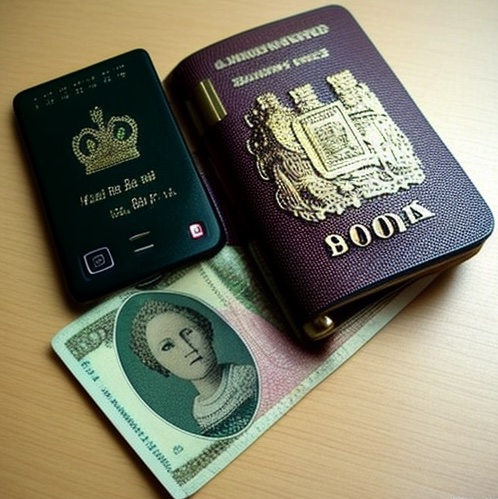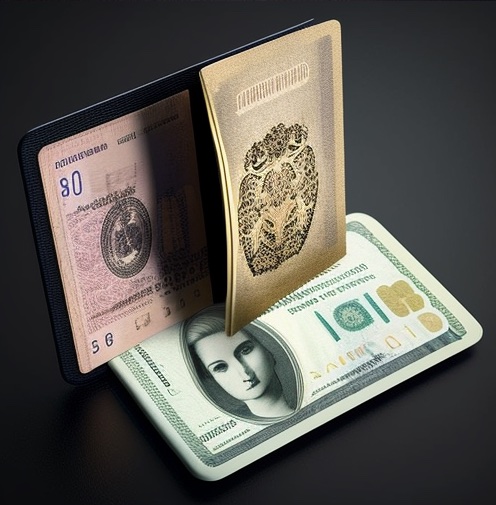 It is likely that technology will continue to play an increasingly important role in our financial and identification systems in the future. The widespread use of digital financial transactions and the increasing use of biometrics and digital identity systems are already making traditional bank notes, passports, and other forms of identification less necessary.
It is likely that technology will continue to play an increasingly important role in our financial and identification systems in the future. The widespread use of digital financial transactions and the increasing use of biometrics and digital identity systems are already making traditional bank notes, passports, and other forms of identification less necessary.
However, it is unlikely that these traditional forms of identification and payment will become completely obsolete in the near future. There are still many people and communities around the world that rely on cash transactions and physical identification documents, and many countries are still working to implement and integrate digital systems.
Additionally, there are security, privacy, and accessibility concerns that must be considered and addressed before widespread adoption of digital identification and payment systems can occur. As technology continues to evolve and improve, it is possible that traditional forms of identification and payment will become less common, but it is unlikely that they will disappear completely.
Bank Notes
Technology is already changing the way we use bank notes and other forms of physical currency. The increasing popularity of digital financial transactions, such as mobile payments and online banking, is reducing the need for physical cash.
Mobile payment systems, such as Apple Pay, Google Pay, and Samsung Pay, allow users to make purchases with their mobile devices, without the need for cash or a physical credit card. Online banking and digital wallets also provide convenient and secure alternatives to traditional bank notes and coins.
Additionally, the use of cryptocurrencies, such as Bitcoin and Ethereum, is also growing, providing an alternative form of digital currency that can be used for transactions without the need for traditional bank notes.
In the future, it is possible that we will see a continued shift towards digital financial transactions and a reduction in the use of physical bank notes. However, it is important to note that the widespread adoption of digital currency will depend on factors such as accessibility, security, and regulatory support.
It is also possible that some countries or communities may continue to use physical bank notes, particularly in regions where there is limited access to technology or a preference for traditional forms of currency.
Passports
Technology has the potential to revolutionize the way we use passports and other forms of physical identification. In the future, it is possible that digital identity systems will replace traditional passports as the primary form of identification for travel and other purposes.
One potential solution for replacing traditional passports is the use of biometrics, such as facial recognition or fingerprint scanning, to verify a person’s identity. This type of technology could be integrated into border control systems, allowing travelers to quickly and easily verify their identity without the need for a physical passport.
Another possibility is the use of digital identity systems, such as blockchain-based solutions, which would allow individuals to store their personal information and identification documents in a secure, decentralized system. This would eliminate the need for physical passports and other forms of identification, as well as reducing the risk of identity theft and fraud.
It is important to note that the widespread adoption of digital identity systems will depend on factors such as accessibility, security, and regulatory support. Additionally, the implementation of these systems will require significant investment in technology and infrastructure, and there are likely to be challenges and obstacles that must be overcome along the way.
Overall, while the use of technology has the potential to replace traditional passports and other forms of physical identification, it is likely to be a gradual process that will take several years to fully implement and integrate.
Digital ID
Technology has the potential to replace traditional ID systems with more secure, efficient, and accessible digital alternatives. There are a few different technologies that are being developed or are already in use to replace traditional ID systems:
- Biometrics: Biometric technologies, such as facial recognition, fingerprint scanning, and iris scanning, can be used to accurately and securely verify a person’s identity. This type of technology is already being used in many countries for passport control and other forms of identity verification.
- Blockchain-based ID systems: Blockchain technology can be used to create decentralized, secure digital identity systems. These systems allow individuals to store and control their personal information and identification documents, reducing the risk of identity theft and fraud.
- Mobile ID systems: Mobile devices, such as smartphones, can be used as a form of digital ID, allowing individuals to securely store and share their personal information and identification documents.
The use of technology to replace traditional ID systems has the potential to increase access to identification for populations that may not have access to traditional forms of identification, such as those living in rural or remote areas. Additionally, digital ID systems can be more secure and efficient than traditional forms of identification, reducing the risk of identity theft and fraud.
However, the widespread adoption of digital ID systems will depend on factors such as accessibility, security, and regulatory support. It is also important to ensure that digital ID systems are designed and implemented in a way that protects individuals’ privacy and personal information.
Governance
The governance of digital ID systems can vary depending on the specific system and the country in which it is being used. However, in general, the governance of digital ID systems is likely to involve a combination of government agencies, private companies, and other stakeholders.
- Government agencies: Government agencies, such as departments of motor vehicles, passport agencies, and national identity agencies, often play a key role in the governance of digital ID systems. They are responsible for creating and implementing regulations and standards for digital ID systems, and may also play a role in the issuance and management of digital IDs.
- Private companies: Private companies, such as technology companies and financial institutions, may also play a role in the governance of digital ID systems. They may develop and implement digital ID systems, and may also be involved in the management and verification of digital IDs.
- Other stakeholders: Other stakeholders, such as civil society organizations, privacy advocates, and international organizations, can also play a role in the governance of digital ID systems. They may provide input on issues such as privacy and security, and may also advocate for the responsible and ethical use of digital ID systems.
Ultimately, the governance of digital ID systems should balance the need for security, privacy, and accessibility, and should be designed in a way that protects individuals’ personal information and rights. The specific governance model for digital ID systems will depend on factors such as the specific system being used, the country or region in which it is being used, and the existing legal and regulatory frameworks.

